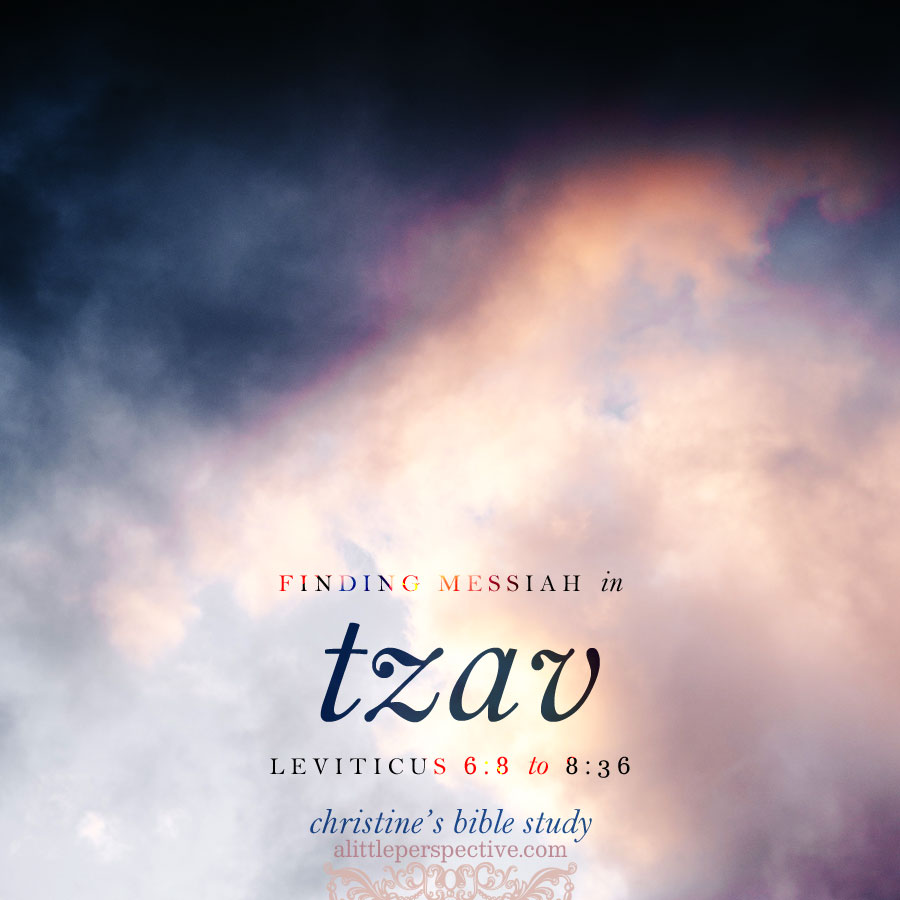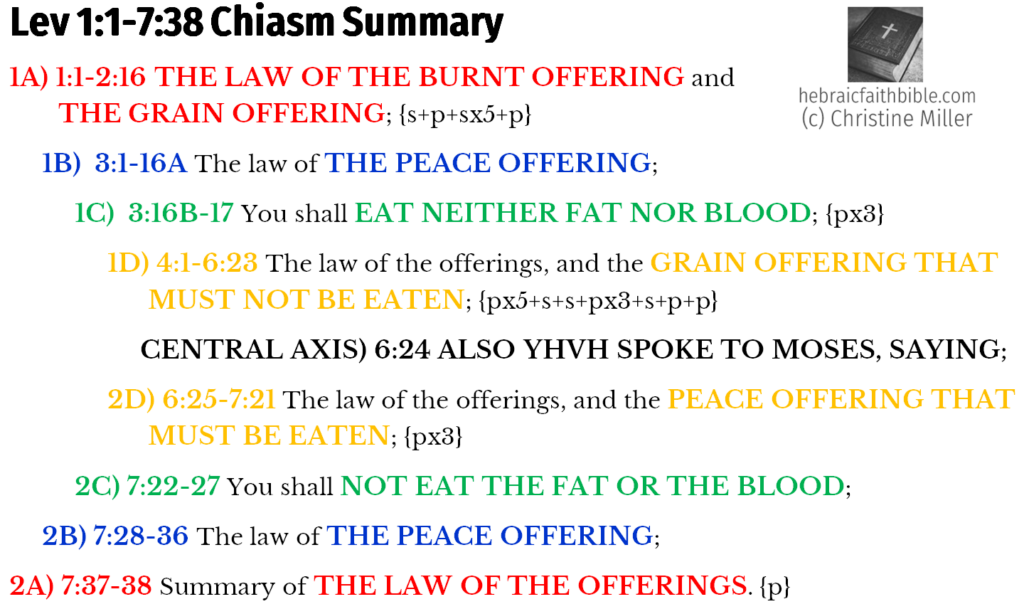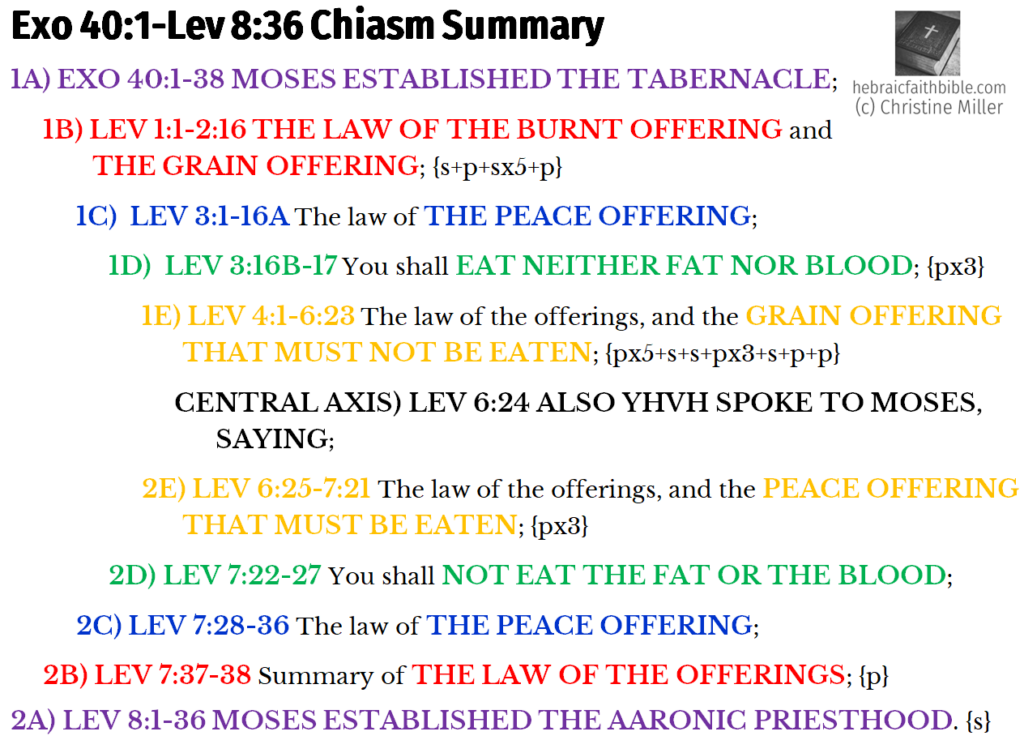Lev 6:8-7:38
Hebrew paragraph divisions:
6:8-13 {s} The law of the perpetual whole burnt offering (olah)
6:14-18 {p} The law of the grain offering (minchah) that must be eaten
6:19-23 {p} The law of the perpetual grain offering (minchah) that must not be eaten (brought by the priests)
6:24-30 {p} The priests’ portion of the sin offering (chattath)
7:1-10 {p} The priests’ portion of the trespass offering (asham) + the other offerings
7:11-21 {p} The law of the peace offering (shelem), its grain offerings + may and must not be eaten
7:22-38 {p} Eat no fat or blood/ priests’ portion of the peace offering/ summary
The Lev 1:1-7:38 chiastic structure reveals Messiah:
The end of Lev 7:38 is the end of the law of the offerings. This means that all the law of the offerings, or sacrifices, has at its heart, “YHVH spoke to Moses,” an unusual central axis. What did YHVH speak, but His word, which proceeded from His heart (Mat 12:34). His Word is what became flesh and dwelt among us, full of grace and truth (Joh 1:14). The heart of the law of the offerings is Messiah. What YHVH spoke to Moses, became flesh in order to be offered up as an offering according to the law of the offerings.
Lev 8:1-36
8:1-36 {s} Consecration of the tabernacle and priesthood
Go back to the Lev 1:1-7:38 chiastic structure. Clearly the structure cannot be made any other way. This leaves the final chapter of the Tzav parashah, Lev 8:1-36, hanging as a loose end. Loose ends are one way the Scripture sets up puzzles asking to be solved.
But see what is revealed. The loose end of Lev 8:1-36 is the account of Moses establishing, or setting up, the Aaronic priesthood. The form and language of the chapter is very similar to the close of Exodus, when once the tabernacle furnishings were completed, Moses set them all up as he had been commanded.
The Lev 1:1-7:38 chiastic structure can be amended as follows, with the central axis, “YHVH spoke to Moses,” continuing to reveal wisdom. Moses did not establish either the Tabernacle, the offerings, or the priesthood because he had nothing else better to do. All of these things were done at the word of YHVH.
Yeshua said of Moses that, “He wrote about Me,” (Joh 5:46). How? The design and function of the Tabernacle prophesies of Messiah. The sacrifices prophesy of Messiah. The priesthood prophesies of Messiah. These things teach us about our justification and sanctification in Messiah; they teach us about being in covenant and relationship with YHVH God.
What does the Tabernacle tell us? God desires to dwell with us, however, sin keeps us separated from Him.
What do the sacrifices tell us? God will atone us for our sins.
What does the priesthood tell us? Atonement comes through the mediation of the priest.
Messiah Yeshua is our Tabernacle (our dwelling place, Immanuel), our Atoning Sacrifice, and our High Priest; His work on the cross is finished. Sin is no longer separating us from the presence of YHVH God. Now all that is left to us, is to draw near in worship.
LEVITICUS 6:8-8:36 ANNUAL TZAV “COMMAND” OUTLINE | LEVITICUS in CHIASTIC STRUCTURE
FINDING MESSIAH in TORAH: A MESSIANIC DISCOVERY THROUGH the TORAH PORTIONS
THE LAW of LOVE: THE GOSPEL of GRACE REVEALED in the COMMANDMENTS OF GOD



















Leave a Reply